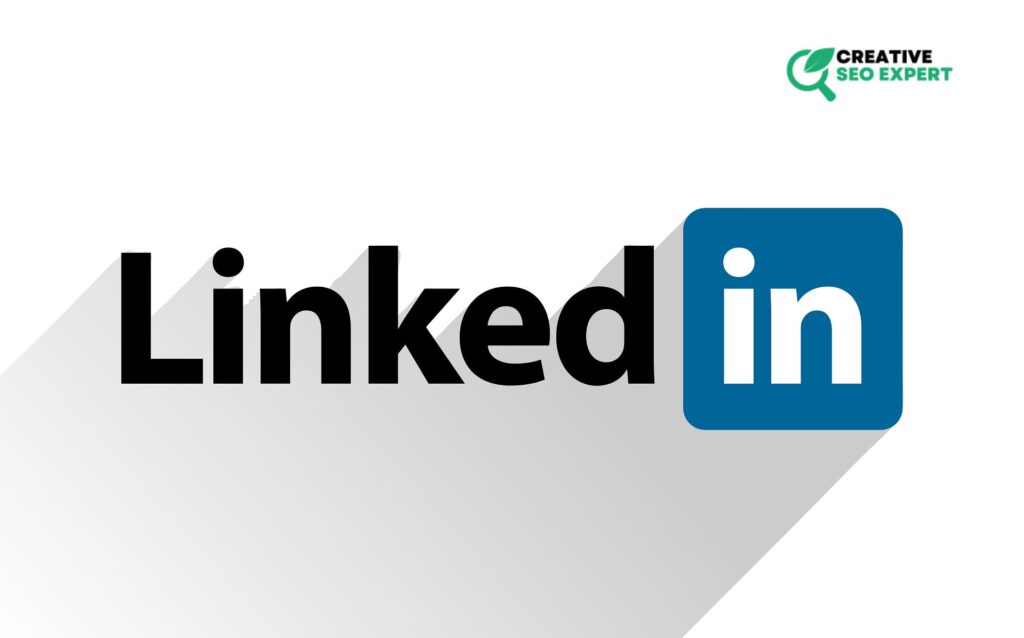If you’re wondering how to write LinkedIn posts that actually attract attention, generate engagement, and build professional relationships, you’re not alone. While many people sign up on LinkedIn and treat it like an online résumé, the real value lies in the content you share. With the right strategy, your posts can position you as a thought leader, build your personal brand, and even open new opportunities.
In this guide, we’ll explore everything you need to know about how to write LinkedIn posts that feel natural, read smoothly, and encourage people to interact. Whether you’re a beginner or someone who’s posted before without much traction, this comprehensive guide will help you transform your content game.
Why Knowing How to Write LinkedIn Posts Matters More Than Ever
LinkedIn has evolved far beyond a platform for job hunting. Today, it’s a content-driven space filled with entrepreneurs, marketers, freelancers, recruiters, and leaders sharing knowledge and building connections. This means knowing how to write LinkedIn posts isn’t optional—it’s essential.
The Rise of LinkedIn as a Content Platform
LinkedIn now boasts over 1 billion users, with more than 50 million companies represented. But here’s the kicker: only a fraction of users actively post content. This gives you an incredible advantage. Posting valuable insights makes you more visible in the feed, helping others discover you even if you’re not actively looking for a job.
What High-Performing LinkedIn Posts Can Do for You
Understanding how to write LinkedIn posts can help you:
-
Attract recruiters and clients
-
Build authority in your industry
-
Connect with like-minded professionals
-
Share your unique voice
-
Promote your business or services (without sounding salesy)
The Foundation: What Makes a LinkedIn Post Effective?
Let’s break down the anatomy of an effective LinkedIn post before getting into writing techniques. When learning how to write LinkedIn posts, mastering the structure is key.
Start with a Captivating Hook
Your first 1–2 lines are critical. That’s all users see before clicking “See More.” Hooks can take several forms:
-
A bold statement: “I quit my job with no backup plan. Here’s what happened.”
-
A question: “Is work-life balance really possible in tech?”
-
A relatable experience: “Last week, I made a huge mistake in a client call…”
The goal? Make your audience pause and think, “I need to read this.”
Stay Focused on One Clear Message
Don’t try to pack too much into one post. Choose one idea per post, whether it’s a lesson, tip, opinion, or experience. Simplicity makes your content easier to digest.
Use a Conversational, Human Voice
Don’t write like a corporate brochure. Instead, write as if you’re talking to a colleague. Avoid jargon, long sentences, or robotic phrasing. The best advice on how to write LinkedIn posts? Write like a real person.
Make It Visually Digestible
Format your posts for easy reading:
-
Keep paragraphs short (1–2 sentences)
-
Use line breaks generously
-
Include bullet points when listing items
-
Use emojis sparingly for tone, not decoration
Step-by-Step Guide: How to Write LinkedIn Posts That Deliver Value
Now let’s dive deeper into the step-by-step process of crafting standout posts. Each step is essential in helping you understand how to write LinkedIn posts that perform well.
Step 1: Understand Your Audience and Set a Clear Goal
You can’t write effectively unless you know who you’re writing for and why.
Identify Your Target Audience
Ask yourself:
-
Are you speaking to job seekers, entrepreneurs, marketers, or tech professionals?
-
What level of experience do they have?
-
What keeps them up at night?
Knowing your audience will help you tailor your tone, language, and topic.
Define the Goal of Your Post
-
Do you want to share a lesson?
-
Spark discussion?
-
Drive traffic to your site?
-
Promote a product?
Each goal requires a different approach. Posts without a clear goal tend to lack direction.
Step 2: Choose the Right Topic for Your Audience
Once you know who you’re talking to and why, it’s time to choose a topic that resonates.
High-Impact Content Ideas for LinkedIn Posts
Here are proven post formats that work well:
-
Career stories: Promotions, layoffs, career changes, failures, wins
-
Lessons learned: What you’ve discovered from experience
-
How-to posts: Teach something useful in a few steps
-
Industry insights: Share your take on market trends or news
-
Behind-the-scenes posts: Show what your day, workflow, or challenge looks like
-
Value-packed tips: Short, actionable advice your audience can use today
When exploring how to write LinkedIn posts, remember to stay relevant and helpful.
Step 3: Craft a Magnetic Hook
This is where most people fail—don’t be one of them.
Hook Examples That Stop the Scroll
-
“Here’s a mistake that almost cost me my biggest client.”
-
“Most people think networking is about asking for favors. It’s not.”
-
“I applied to 200 jobs. Here’s what I learned.”
These lines create curiosity and invite the reader into the story. Great hooks are at the heart of how to write LinkedIn posts that people can’t scroll past.
Step 4: Deliver Value With Clarity and Emotion
Once you hook your reader, the body of your post must deliver real value.
Tips for Writing the Body of Your Post
-
Stick to one main message or story
-
Share specific details: What happened? What did you learn?
-
Use a casual tone that feels natural
-
Avoid generic fluff—make it personal and real
Example:
“In 2021, I launched my first freelance business. I failed. Not because I wasn’t skilled, but because I didn’t know how to price my services. I undercharged, overdelivered, and burned out.”
This is how to write LinkedIn posts with emotional appeal.
Step 5: Include a Powerful CTA (Call to Action)
You’ve given value—now invite interaction. This increases visibility and builds relationships.
CTA Examples for Engagement
-
“Have you experienced something similar? I’d love to hear your thoughts.”
-
“What advice would you give to someone just starting out?”
-
“Drop your biggest lesson from this week in the comments.”
If you’re serious about learning how to write LinkedIn posts that perform, never skip the CTA.
Step 6: Optimize for Reach and Visibility
Even great content can go unseen if it’s not optimized for the platform.
Posting Time and Frequency
Post when your audience is active. Best practices suggest:
-
Tuesday to Thursday mornings
-
Between 8 AM–11 AM
Consistency is more important than frequency. Posting 2–3 times a week is ideal for growth.
Use Relevant Hashtags
Include 3–5 relevant hashtags. Avoid spammy or ultra-generic ones like #success.
Good examples:
-
#ContentMarketing
-
#LeadershipDevelopment
-
#RemoteWorkTips
Engage Before and After Posting
Comment on others’ posts 10–15 minutes before posting. Then reply to every comment on your post. This signals to LinkedIn that your post is valuable.
Real Examples of High-Engagement LinkedIn Posts
To truly understand how to write LinkedIn posts, it helps to study real-world examples.
Example 1 – Career Pivot
“After 10 years in finance, I made the switch to UX design. Here’s why—and how I made it work (without quitting cold turkey).”
Why it works: Personal, relatable, informative.
Example 2 – Failure and Lessons
“I thought I nailed the pitch. Turns out, I didn’t ask enough questions. Here’s what I’ll do differently next time.”
Why it works: Vulnerable, educational, actionable.
Example 3 – Industry Insight
“AI is changing everything—but most marketers are still behind. Here’s how to adapt before it’s too late.”
Why it works: Timely, opinionated, helpful.
Avoid Common Mistakes When Writing LinkedIn Posts
Many users unknowingly sabotage their content efforts. Here’s what to avoid if you’re mastering how to write LinkedIn posts:
Mistake 1 – Using Corporate or Robotic Tone
LinkedIn is a professional space, but that doesn’t mean boring. Drop the buzzwords and speak plainly.
Mistake 2 – Posting Without Purpose
A post that doesn’t inform, inspire, or start conversation will likely flop. Know your intent.
Mistake 3 – Overusing Hashtags or Emojis
Cluttering your post with too many symbols can distract from your message.
Mistake 4 – Ignoring Your Audience
If you never ask questions or respond to comments, your growth will stall.
How to Build Your Personal Brand with LinkedIn Posts
Posting on LinkedIn is one of the most effective (and free) ways to build your personal brand.
Create Content Pillars
Pick 2–4 main topics you want to be known for. Stick to these themes to stay consistent.
Example:
-
Career development
-
Remote work
-
Leadership mindset
Share Your Journey
Talk about your growth. Share milestones and missteps. The journey builds trust.
Show Up Consistently
You don’t need to post every day, but 2–3 thoughtful posts a week can yield major results.
Conclusion
Learning how to write LinkedIn posts is one of the most valuable skills for modern professionals. Whether you want to grow your audience, share your voice, or open doors to new opportunities, great content is the key.
Remember:
-
Focus on one message per post
-
Start with a great hook
-
Be honest, helpful, and real
-
Always include a call to action
-
Show up consistently
With practice, your posts will start to spark conversations, build authority, and attract the kind of network you truly want.
So, what will you post next?
Frequently Asked Questions (FAQs)
What’s the ideal length of a LinkedIn post?
Most high-performing posts are 150–300 words, but longer posts can work if they’re well-structured and offer strong value.
How often should I post on LinkedIn?
2–3 times per week is ideal for growth and engagement without overwhelming your audience.
What’s the best time to post?
Weekday mornings (especially Tuesday–Thursday, 8–10 AM) tend to get higher visibility.
Can I reuse content across platforms?
Yes, but tweak it to suit the tone of each platform. LinkedIn prefers a professional yet personal tone.
How do I measure success on LinkedIn?
Track metrics like:
-
Views
-
Comments
-
Shares
-
Profile visits
-
Connection requests after a post


